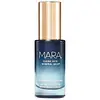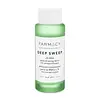What's inside
What's inside
 Key Ingredients
Key Ingredients

 Benefits
Benefits

 Concerns
Concerns

 Ingredients Side-by-side
Ingredients Side-by-side

Salicylic Acid 2%
MaskingWater
Skin ConditioningSimmondsia Chinensis Seed Oil
EmollientC13-15 Alkane
SolventVitis Vinifera Seed Oil
EmollientGlycerin
HumectantPolyglyceryl-3 Polyricinoleate
EmulsifyingCaprylic/Capric Triglyceride
MaskingNiacinamide
SmoothingDisteardimonium Hectorite
StabilisingNigella Sativa Seed Oil
EmollientBakuchiol
AntimicrobialCucurbita Pepo Seed Oil
EmollientCorylus Avellana Seed Oil
EmollientCalophyllum Inophyllum Seed Oil
AntimicrobialSodium Chloride
MaskingGluconolactone
Skin ConditioningMagnesium PCA
HumectantMandelic Acid
AntimicrobialSodium Benzoate
MaskingBisabolol
MaskingHelianthus Annuus Seed Oil
EmollientLaminaria Hyperborea Extract
Skin ProtectingZinc PCA
HumectantSodium Hydroxide
BufferingMagnesium Aspartate
Skin ConditioningZinc Gluconate
Skin ConditioningCrambe Maritima Leaf Extract
Skin ConditioningEugenia Caryophyllus Bud Extract
PerfumingFucus Vesiculosus Extract
EmollientCalcium Gluconate
HumectantPhenoxyethanol
PreservativeSalicornia Herbacea Extract
Skin ConditioningCopper Gluconate
Skin ConditioningUndaria Pinnatifida Extract
Skin ConditioningZingiber Officinale Root Extract
MaskingSodium Carbonate
BufferingSalicylic Acid 2%, Water, Simmondsia Chinensis Seed Oil, C13-15 Alkane, Vitis Vinifera Seed Oil, Glycerin, Polyglyceryl-3 Polyricinoleate, Caprylic/Capric Triglyceride, Niacinamide, Disteardimonium Hectorite, Nigella Sativa Seed Oil, Bakuchiol, Cucurbita Pepo Seed Oil, Corylus Avellana Seed Oil, Calophyllum Inophyllum Seed Oil, Sodium Chloride, Gluconolactone, Magnesium PCA, Mandelic Acid, Sodium Benzoate, Bisabolol, Helianthus Annuus Seed Oil, Laminaria Hyperborea Extract, Zinc PCA, Sodium Hydroxide, Magnesium Aspartate, Zinc Gluconate, Crambe Maritima Leaf Extract, Eugenia Caryophyllus Bud Extract, Fucus Vesiculosus Extract, Calcium Gluconate, Phenoxyethanol, Salicornia Herbacea Extract, Copper Gluconate, Undaria Pinnatifida Extract, Zingiber Officinale Root Extract, Sodium Carbonate
Water
Skin ConditioningArginine
MaskingSalicylic Acid
MaskingLactobacillus/Papaya Fruit Ferment Extract
AbrasiveMoringa Oleifera Leaf Water
Skin ConditioningMoringa Oleifera Seed Extract
Skin ConditioningEucalyptus Globulus Leaf Water
MaskingChlorella Ferment
Skin ConditioningPaeonia Suffruticosa Root Extract
Skin ProtectingScutellaria Baicalensis Root Extract
AstringentLactic Acid
BufferingGlycerin
HumectantButylene Glycol
HumectantXylitylglucoside
HumectantAnhydroxylitol
HumectantXylitol
HumectantLeuconostoc/Radish Root Ferment Filtrate
AntimicrobialGluconolactone
Skin ConditioningMaltodextrin
AbsorbentGlucose
HumectantPotassium Sorbate
PreservativeSodium Benzoate
MaskingWater, Arginine, Salicylic Acid, Lactobacillus/Papaya Fruit Ferment Extract, Moringa Oleifera Leaf Water, Moringa Oleifera Seed Extract, Eucalyptus Globulus Leaf Water, Chlorella Ferment, Paeonia Suffruticosa Root Extract, Scutellaria Baicalensis Root Extract, Lactic Acid, Glycerin, Butylene Glycol, Xylitylglucoside, Anhydroxylitol, Xylitol, Leuconostoc/Radish Root Ferment Filtrate, Gluconolactone, Maltodextrin, Glucose, Potassium Sorbate, Sodium Benzoate
 Reviews
Reviews

Ingredients Explained
These ingredients are found in both products.
Ingredients higher up in an ingredient list are typically present in a larger amount.
Gluconolactone is a PHA. PHAs are a great gentle alternative to traditional AHAs.
When applied, Gluconolactone has the same affect on skin as AHAs such as lactic acid. It helps dissolve the dead skin cells in the top layer of your skin. This improves texture and brightens the skin.
PHAs are more gentle than AHAs due to their larger structure. They do not penetrate as deeply as AHAs and take a longer time to dissolve dead cells. Studies show PHAs do not cause as much irritation.
Gluconolactone has some interesting properties:
In a 2004 study, Gluconolactone was found to prevent UV damage in mouse skin cells and has not been found to increase sun sensitivity. However, we still recommend wearing SPF daily.
This ingredient is is an created by reacting gluconic acid with an alcohol.
Learn more about GluconolactoneGlycerin is already naturally found in your skin. It helps moisturize and protect your skin.
A study from 2016 found glycerin to be more effective as a humectant than AHAs and hyaluronic acid.
As a humectant, it helps the skin stay hydrated by pulling moisture to your skin. The low molecular weight of glycerin allows it to pull moisture into the deeper layers of your skin.
Hydrated skin improves your skin barrier; Your skin barrier helps protect against irritants and bacteria.
Glycerin has also been found to have antimicrobial and antiviral properties. Due to these properties, glycerin is often used in wound and burn treatments.
In cosmetics, glycerin is usually derived from plants such as soybean or palm. However, it can also be sourced from animals, such as tallow or animal fat.
This ingredient is organic, colorless, odorless, and non-toxic.
Glycerin is the name for this ingredient in American English. British English uses Glycerol/Glycerine.
Learn more about GlycerinSalicylic Acid (also known as beta hydroxy acid or BHA) is a well-known ingredient for treating skin that struggles with acne and clogged pores. It exfoliates both the skin's surface and deep within the pores to help clear out buildup, control oil, and reduce inflammation.
Unlike AHAs (alpha hydroxy acids), salicylic acid is oil-soluble. This allows it to penetrate into pores which makes it especially effective for treating blackheads and preventing future breakouts.
Salicylic acid is also known for its soothing properties. It has a similar structure to aspirin and can calm inflamed or irritated skin, making it a good option for acne-prone skin that is also sensitive.
Concentrations of 0.5-2% are recognized by the U.S. FDA as an over-the-counter topical acne product.
It can cause irritation and/or dryness if one's skin already has a compromised moisture barrier, so it's best to focus on repairing that before introducing this ingredient into your routine.
While salicylic acid does not increase sun sensitivity, it’s still important to wear sunscreen daily to protect your skin.
If you are looking for the ingredient called BHA or Butylated Hydroxyanisole, click here.
Learn more about Salicylic AcidSodium Benzoate is a preservative. It's used in both cosmetic and food products to inhibit the growth of mold and bacteria. It is typically produced synthetically.
Both the US FDA and EU Health Committee have approved the use of sodium benzoate. In the US, levels of 0.1% (of the total product) are allowed.
Sodium benzoate works as a preservative by inhibiting the growth of bacteria inside of cells. It prevents the cell from fermenting a type of sugar using an enzyme called phosphofructokinase.
It is the salt of benzoic acid. Foods containing sodium benzoate include soda, salad dressings, condiments, fruit juices, wines, and snack foods.
Studies for using ascorbic acid and sodium benzoate in cosmetics are lacking, especially in skincare routines with multiple steps.
We always recommend speaking with a professional, such as a dermatologist, if you have any concerns.
Learn more about Sodium BenzoateWater. It's the most common cosmetic ingredient of all. You'll usually see it at the top of ingredient lists, meaning that it makes up the largest part of the product.
So why is it so popular? Water most often acts as a solvent - this means that it helps dissolve other ingredients into the formulation.
You'll also recognize water as that liquid we all need to stay alive. If you see this, drink a glass of water. Stay hydrated!
Learn more about Water